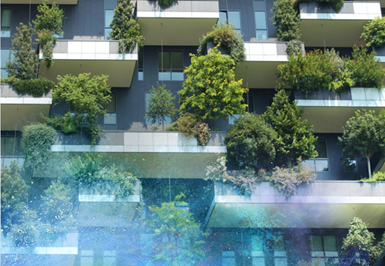AkzoNobel Interpon Brand Receives EPD for Third Time
An Enviromental Product Declaration has been issued to the Interpon powder coatings brand from AkzoNobel Powder Coatings.
#sustainability
Edited by

Photo Credit: AkzoNobel
The Interpon powder coatings brand from AkzoNobel has secured its third Environmental Product Declaration (EPD), affirming the company’s commitment to the sustainability of its products and its sustainability goals, including a 50% carbon footprint reduction by 2030.
An EPD is an independently verified assessment of a product’s environmental impact across its whole life span, from initial production to end-of-life disposal or recycling. It contributes benefits to green building schemes, such as Leadership in Energy and Environmental Design (LEED) and Building Research Establishment Environment Assessment Methodology (BREEAM) certified building projects.
Interpon D became the first powder coating to achieve an EPD in 2015 before being renewed in 2018. The most recent EPDs are valid for five years with global geographical scope considering 11 representative powder coating production sites.
Interpon’s EPD is compliant with ISO 14025:2006 type III declaration and EN 15804:2012+A2:2019/AC:2021. EPD International AB, a company registered in Sweden, is the program operator and has the responsibility for the administration and operation of the International EPD System. The three declarations for the Interpon D1000, D2000 and D3000 product series deliver more detailed transparency in accordance with EN15804+A2.
“This EPD renewal shows how we are committed to providing total transparency concerning the sustainability credentials of the raw materials, manufacture and transportation associated with creating Interpon D,” says Bob Dirks, global segment manager architectural at AkzoNobel Powder Coatings.
“The interest for environmental declarations in building rating systems and certification schemes has increased significantly in the last few years, and Interpon continues to lead the way in giving architects and specifiers greater depth and knowledge of the materials they are using and their life cycle environmental impact.”
RELATED CONTENT
-
Bales Metal Surface Solutions Installs New Nickel Plating Lines
The installation has doubled the finishing supplier’s nickel line capacity.
-
Beckers Group Appoints Chief Sustainability Officer
Since 2016 Nicklas Augustsson’s focus has been sustainability, driving the group sustainability agenda and heading the global sustainability team.
-
Axalta Receives International Sustainability and Carbon Certification Plus
This milestone further reinforces Axalta’s commitment to ensuring sustainability remains central to every part of its business.
















